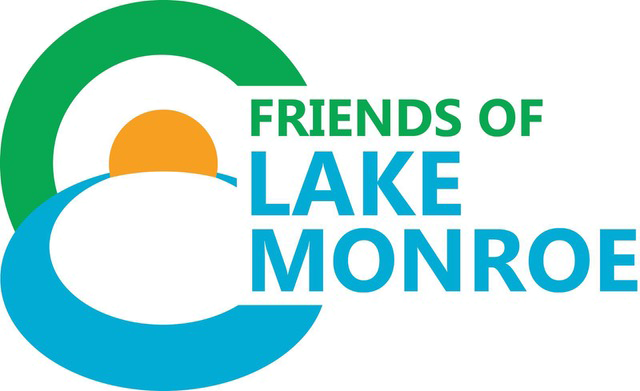Community Forums Edition 2022 Newsletter
In This Edition
Lake Monroe Community Forums - 2022 Edition
Septic System Maintenance Program Update
Young Watershed Protectors
Executive Director Needed
Upcoming Events
Forest Bathing
Microplastics Threaten Our Waterways
Get Involved
Become a Member
Lake Monroe Community Forums 2022 Edition
Many of you may remember the community forums we held at the beginning of the watershed planning process in late 2019 and early 2020. Our goal was to hear community concerns about the lake so we could address them in the watershed plan. Now that our plan is complete, we need community input on how to put the plan into action! Join us for one of three different sessions:
Tuesday, May 24 in BLOOMINGTON from 6:45 pm -8:30 pm
St. Thomas Lutheran Church, 3800 E 3rd St, Bloomington, IN
Thursday, June 9 in NASHVILLE from 6:45 pm -8:30 pm
Brown County Public Library, 205 Locust Ln, Nashville, IN
Wednesday, June 15 VIRTUALLY from 6:45 pm -8:30 pm
Zoom link will be sent in advance
To register for any of the three forums, please click here: https://forms.gle/rJK7WYiTNSSywkZn7Many thanks to the League of Women Voters of Bloomington-Monroe County and the League of Women Voters of Brown County for co-sponsoring the community forums.
Septic System Maintenance Cost-Share Program Update
Over 85 community members in Monroe County have applied for our recently launched Septic System Maintenance Cost-Share Program. Over 25 have pumped their septic tanks. Over 30 participated in our Septic System Maintenance Workshop via Zoom. We are thrilled with the response and with testimonials from participants."What a treat to get a price-septic tank pumping! Helps me pay for it, and helps Lake Monroe stay cleaner! A wonderful gift! Thank you."– Tana McElhinney“I found out it is not wise to put bleach or anti-bacterial down your drains or toilet stools. It kills the bacteria & prevents the septic from doing its job! I am guilty of doing this. We definitely need to protect the lake for our great-grandchildren & future generations. Thanks, Friends of Lake Monroe!”– Edna DePierreLearn more about the program and how to care for your septic system at www.friendsoflakemonroe.org/septic.
Young Watershed Protectors In Action
Last month, Taylor Sullivan, a first grader at Unionville Elementary, shouted “Stop the car Grammy, we need to pick up that plastic so it won’t kill the penguins!" Taylor is learning about the connection of man-made waste and the harm it can cause to wildlife.The plastic and styrofoam she collected were on the banks of Brummetts Creek which flows into Lake Monroe, where it can maim and sometimes kill ducks, geese, and other wildlife. Even kids can make a difference in protecting our lake.
Help Us Hire Our First Executive Director!
We need your help to move to the next level. Sherry Mitchell Bruker, founder and president of the Friends of Lake Monroe, has been working tirelessly for five years as our grant writer, project manager, and leader of our working board of directors. We are now at a place where we need to bring on an Executive Director to strengthen our organization and implement our newly created watershed management plan.Will you help us by making a contribution to support the Executive Director position? One member has already generously donated $25,000 which sets up our matching fund program. Can you help us match this donor’s contribution by giving $50, $100, $1,000, or more to support the future of the Friends of Lake Monroe? Know someone who would make a great Executive Director? Please send them our job listing - https://friendsoflakemonroe.org/job-opening/Applications will be accepted until the position is filled.
Upcoming Events
Summer is coming and the Friends of Lake Monroe Calendar is heating up! Join us for an upcoming event and celebrate our beautiful lake.May 7 – Nature JournalingMay 19 – Adopt-A-Shoreline Cleanup at PaynetownMay 24 – Lake Monroe Forum in BloomingtonJune 9 – Lake Monroe Forum in NashvilleJune 15 – Lake Monroe Virtual Forum via ZoomJune 16 – Adopt-A-Shoreline Cleanup at PaynetownLearn more and register on the FLM webpage at https://friendsoflakemonroe.org/events/
FOREST BATHING by Keith Bobay
On a beautiful, frosty morning the seven of us trudged up the hundred-foot rise into the forest for our introduction to forest bathing, our first member event for 2022. Pamela Fuhrmann, certified Forest Bathing guide, explained that this restorative practice was derived from the Japanese art of Shinrin-Yoku and is backed by scientific research demonstrating a wide array of health benefits, including cognitive, cardiovascular, immune system and more.As we continued on the trail through Mary Madore’s woods, we were instructed to slow way down, appreciate the forest and try to understand how to live in a reciprocal relationship with nature. Pamela said, “As nature tends to our well-being, we should offer in return our gratitude and care.” At the first ‘sit spot’ we focused on our senses for twenty minutes. The birdsong, windsong, forest colors and odors were striking. I even sampled an edible(?) grass. It tasted fresh and green. The idea is to become immersed in the forest and set aside daily worries and concerns.During another twenty minute exploration, we focused on a specific element of our choosing. I quietly sat and sketched a beautiful cut leaf toothwort. These spring ephemerals appeared to be thriving in the moist forest floor.As we continued our bathing, we shared ideas and forest samples, often pointing out unusual growths, mosses or tree bark. After about 90 minutes of Forest immersion, Pamela called us together for the ritual ‘tea gathering’. The mint tea was made from cuttings she had steeped earlier. We thankfully drank the warm, mild offering, then poured some on the ground in gratitude to the forest and our new-found relationship with nature.Nearly a month later, Mary Madore offered these thoughts: “Feeling thankful to Pam Fuhrmann for teaching us the art of Forest Bathing. On a recent visit to McCormick’s Creek State Park, I practiced this Bathing in the woods by taking slow, intentional steps through the forest, kneeling now and then to examine tiny details of the emerging plant life. This brought a deep sense of connection and inner quiet.”
Microplastics Threaten Our Lakes, Rivers, and Oceans
The proliferation of plastics worldwide since the 1950s has offered benefits to society by providing inexpensive, lightweight consumer products, but has created huge environmental problems because much of it isn’t disposed of properly and ends up on our city streets, our roadsides, and in our rivers, lakes, and the oceans. Plastic debris includes large items, such as consumer packaging, beverage containers, straws, and many single-use items that are easy to see, but also microplastics, which are defined as plastic pieces less than five millimeters (0.2 in.) long that are not readily observed in the environment. Microplastics can be fragments broken down from larger pieces, tiny beads that are manufactured to be used in exfoliating products such as toothpaste and other cosmetics, or microfibers used in the manufacture of polyester clothing. Unfortunately, plastics never truly go away; they just break down into smaller and smaller particles. The qualities of plastics that make them attractive as consumer products make them very persistent in the environment.Microplastics have been found in aquatic systems almost everywhere, including the world’s oceans, the Great Lakes, and most freshwater lakes and rivers that have been tested. Microplastics, especially microfibers, can become airborne and travel the globe. Particles have been found in Antarctica and on Mt. Everest. Microplastics have even been found in tap water and bottled water with surprising frequency. Close to home, microplastics have been found in Lake Monroe in a single sample of “raw water” (before treatment) collected at the water treatment plant by the City of Bloomington Utilities. That sample contained 35 particles of microplastics per liter, but no particles were found in the treated water distributed to CBU customers.
Where in our waterways are microplastics found?
(U.S. Geological Survey)
12% of freshwater fish
50 particles per serving of cultured oysters
1 part per 8 gallons of Great Lakes tributary water
1285 particles per sq. ft. of river sediment
112,000 particles per sq. mi. of Great Lakes water
The toxic effects of microplastics on wildlife and humans is not well understood. The contaminants that accumulate on plastic particles, such as PCB's, polycyclic aromatic hydrocarbons (PAH's), organochlorine pesticides, trace metals, and even pathogens, have been found at high concentrations on microplastics. The unhealthy additives found in plastic particles have been associated with cancer and endocrine disruption, and it is known that larger microplastic particles can impact the guts of wildlife causing digestive obstruction, and even death in fish and birds.Microplastics have been found in the blood and lungs of humans, in human feces, and in the placentas of newborn babies. It is known that some of the chemicals used in the manufacture of plastics are harmful to humans, but our exposure to hundreds of chemicals in our daily lives, and the lack of large-scale studies of microplastics make it difficult to draw any conclusions about microplastic toxicity in humans.What can you do?The proliferation of plastics in our culture makes it difficult to avoid using them, and unfortunately, projections are that plastic production will increase significantly if the future. However, this list of actions suggested by the Student Conservation Association provides some positive steps to help reduce microplastic pollution.
Avoid products with known microplastics like microbeads in face washes and toothpastes. Use this link to search for products containing microbeads: https://www.beatthemicrobead.org/product-lists/
Stop using single-use plastics like straws, plastic shopping bags, and plastic drink cups that can break down into smaller particles. Reuse products whenever possible, recycle when it’s not, and make sure no plastics are disposed of improperly.
Cut out plastic in your consumption choices wherever you can. One easy switch is to buy beverages in aluminum cans instead of plastic bottles. Start with one change at a time to make them stick.
If you own a business, choose sustainable packaging.
Write a letter asking your preferred companies to use sustainable packaging. You can also write to your city to advocate for a plastic bag ban. Note: the City of Bloomington passed an ordinance several years ago to ban the use of plastic bags, but the Indiana General Assembly passed legislation to prevent the ban from becoming law.
Strategically do your laundry. Try to make your synthetic clothes last as long as possible between washes to avoid microfiber pollution. Air them out in the sun or dust with baking soda to help absorb smells.
Vote for legislation that puts bans or taxes on plastics.
Join protests against plastic factory pollution.
Spread the word. Your friends, family, students, and co-workers joining your efforts will have an even greater impact!
Get Involved!
Many of you have become FLM members or have made a donation. Wouldn't you enjoy being a closer part of the group? Here are specific opportunities we have now.
Facilitators are needed to guide small group discussion at our community forums
Volunteers are needed to serve on our Development committee to assist with member recruitment, special events, and fundraising.
Volunteers are needed for shoreline cleanups on May 19 and June 16 at Paynetown.
Or do you have a special skill you would like to share? FLM's volunteer coordinator, Keith Bobay, is waiting to hear from you at volunteer@friendsoflakemonroe!
FLM Membership and Donations:Here's How
To Become a Member
Memberships are available at several levels.
K-5 Elementary Student: $5.
Grade 6-12 Student: $10.
Individual adult: $25.
Family: $45.
Supporting: $100.
Sustaining: $250.
You can sign up on FLM's website here: https://friendsoflakemonroe.org/membership/.To DonateFor those interested in financially supporting FLM's work, the website also has a page for donations, here: https://friendsoflakemonroe.org/donate/.






